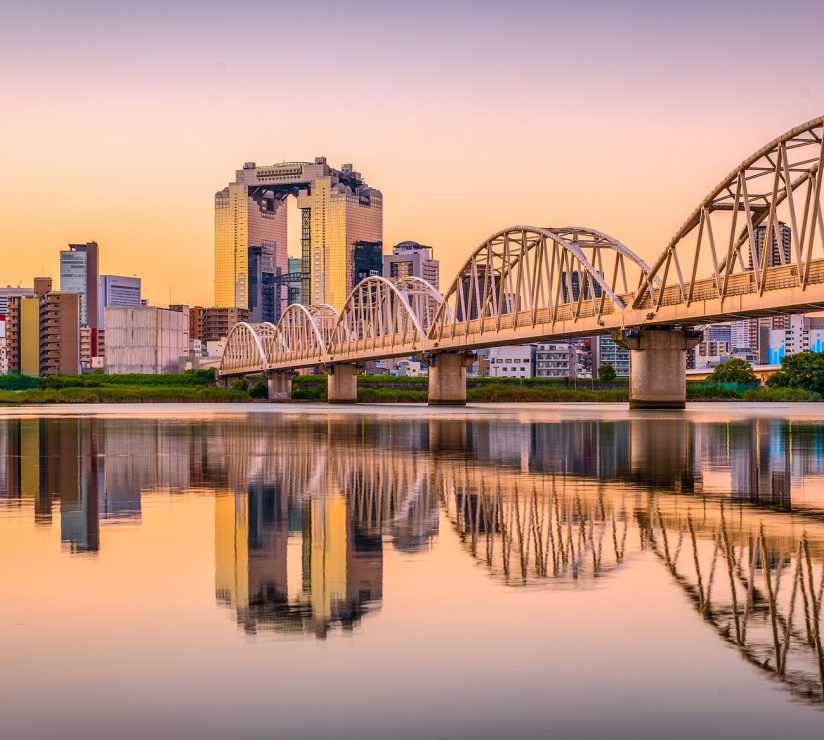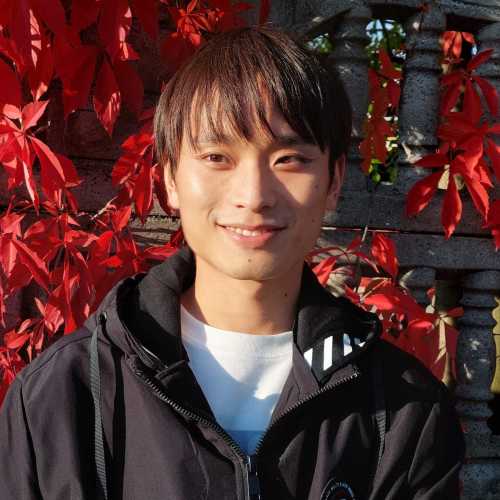Table Of Contents
- What Makes a "Highlight" in Osaka?
- Osaka Castle & Park - More Than Photos
- Shitennō-ji — Buddhism That Breathes
- Umeda Sky Building — Vertical Nostalgia and Best Views
- Osaka Aquarium Kaiyukan & the Rhythm of Osaka Bay
- Dotonbori - Neon Lights & Street Food
- The Wizarding World vs. Real Local Magic
- Osaka Station — City Within a Station
- Getting Around: Bullet Train, Loops, and Winding Alleyways
- Day Trip Destinations
- Nightlife & Local Culture
- Beyond Tourist Attractions
- Osaka Japan Tourist Spots: Rethinking What's "Touristy"
- Living Highlights, Not Museum Pieces
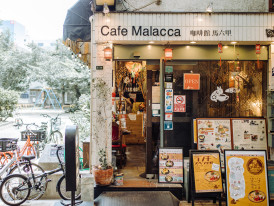
A cozy kissaten (Japanese-style coffee shop) with handwritten menus
What Makes a "Highlight" in Osaka?
When people ask about Osaka highlights, I pause. Not because I don't know my city—I've lived here my entire life, watched it rebuild twice, seen neighborhoods bloom and fade. I pause because "highlight" suggests something to consume quickly, photograph, check off.
That's not how this city works.
Osaka doesn't reveal itself in monuments alone. It breathes in morning rush at Osaka Station, steam from takoyaki grills, elderly couples meeting at castle park for daily walks. Real highlights aren't separate from daily life—they're woven into it.

Osaka Castle lit up at night from the far side Photo by Anh Nguyen on pexels
Osaka Castle & Park - More Than Photos
The castle sits reconstructed and gleaming, impossible to ignore. Every guidebook mentions it, tour buses stop, first-time visitors climb for views. But the park around it hosts real life.
I've jogged the five-kilometer castle loop thousands of times, passing cherry trees and stone walls surviving more than most buildings. Early morning brings runners and dog walkers. Evening draws families teaching kids to bike, elderly groups practicing tai chi.
The park transforms seasonally in ways interior exhibits never will. Spring brings cherry blossom chaos—worth experiencing once to understand why Japanese people obsess over pink flowers. But autumn offers better views, fewer crowds, when ginkgo trees turn electric yellow against grey stone.
Winter mornings are my favorite. Frost on grass, steam from moats, white walls sharp against cold blue sky. Tourists gone, bundled joggers emerge determined. This is when it feels most itself; functional, enduring, part of daily rhythm rather than visitor performance.
The castle museum inside tells Toyotomi Hideyoshi's story adequately enough. But the park tells a better story, how a 16th-century fortress became a 21st-century community space, how history is shaped and reinterpreted over time, rather than simply preserved.
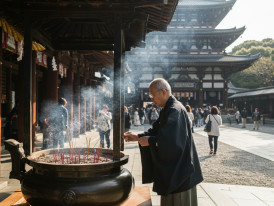
Elderly man lighting incense at Shitennō-ji
Shitennō-ji — Buddhism That Breathes
Founded in 593 AD, making it among Japan's oldest temples. But it smells like incense and rain, wooden walkways creak, koi ponds reflect shifting shadows.
Nothing here is preserved in amber. It's working space; people pray, light incense, leave offerings. Buildings rebuilt multiple times, most recently after war. The "ancient" temple is newer than my apartment.
But that doesn't diminish authenticity. Rituals continue, gardens are tended. On the 21st and 22nd monthly, temple grounds host flea markets drawing vendors selling vintage kimonos to handmade pottery. This brings the temple most alive, not during quiet contemplation, but controlled chaos of commerce and community.
The pagoda rises five stories, visible from blocks away. Tourists photograph it from every angle. But I prefer the smaller buildings, the lecture hall where elderly groups gather for tea ceremonies, the bell tower where pigeons nest in the eaves, the side paths where bamboo grows wild between stone lanterns.
Shitennō-ji works because it never stopped working. It's not a museum of Buddhism; it's Buddhism continuing to happen in the middle of urban Japan, adapting and persisting like everything else in this city.
Looking for a private city experience in Osaka?
Explore the city with a local who plans a private day just for you; no groups, no scripts.
Umeda Sky Building — Vertical Nostalgia and Best Views
This looks like someone's 1970s future vision. Two towers connected by floating observatory, completed 1993, old enough to feel retro, new enough to seem ridiculous.
The ride involves escalators climbing through transparent tubes suspended between towers. Mildly terrifying, completely unnecessary, but architects understood reaching the observation deck should feel experiential.
From 173 meters up, Osaka spreads in all directions; low, dense sprawl extending to mountains on clear days. You spot landmarks: castle, river, bay. Mostly rooftops, train lines, geometric patterns large cities make from above.
Sunset is popular, and I understand why. The city shifts from business gray to warm gold. But I prefer off-peak hours—midweek afternoons when nearly empty, early morning when the city wakes.
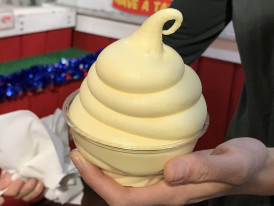
Locals eating soft serve by the port Image by goomba478 from Pixabay
Osaka Aquarium Kaiyukan & the Rhythm of Osaka Bay
Kaiyukan consistently ranks among the world's best aquariums, which would normally make me suspicious. But in this case, the reputation is earned. The whale shark tank alone justifies the admission price - a massive cylindrical space that spirals down. you can watch these Pacific giants glide past at different depths.
The aquarium's design follows the Pacific Ring of Fire, each floor representing different marine environments. It's educational without being pedantic, immersive without being manipulative. The jellyfish displays are hypnotic. The penguin habitat feels authentic. Even the gift shop restrains itself to reasonable levels of cute.
But Kaiyukan is only part of the Tempozan area story. The Ferris wheel next door rises 112 meters, offering bay views that change color with weather and season. On clear days you can see across Osaka Bay to the mountains beyond. On foggy days you ride up into the clouds and back down again, which has its own appeal.
The bay area has a different rhythm than central Osaka. Slower, wider, with space to breathe between buildings. Families come here on weekends, couples on dates, tourists checking off attractions. But it also draws locals who just want to walk along the water, eat soft-serve ice cream, watch container ships navigate the harbor.
Most Universal Studios visitors breeze past Tempozan, eager for the headline attractions—but they’re missing out. Not everything has to be world-famous to be worthwhile. Sometimes, a place that’s simply pleasant, thoughtfully designed, and truly relaxing is exactly what you need.
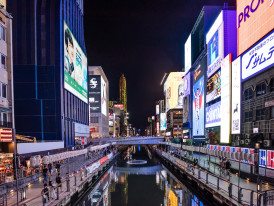
Neon reflections in canal water
Dotonbori - Neon Lights & Street Food
Dotonbori gets criticized for being touristy, and absolutely is. Neon lights brighter than necessary, crowds thicker than comfortable, mechanical crab signs more cartoon than culture. But underneath performance, real delicious food happens.
Takoyaki vendors work their grills with practiced efficiency, rotating octopus balls with metal picks, brushing sauce, sprinkling bonito flakes that dance in the heat. It's street theater, but it's also skilled labor, the same motions repeated thousands of times until they become fluid, automatic, perfect.
Okonomiyaki stalls layer cabbage, batter, meat, and whatever else onto flat grills, then flip the whole creation with spatulas that have seen decades of use. The smell draws you from blocks away — savory, slightly sweet, completely satisfying. Yes, tourists eat here. Locals eat here too, especially late at night when the crowds thin and the comedy clubs empty out.
The canal reflects neon in broken patterns that shift with every passing boat. Photographers love this effect, but it's not posed for them, it's incidental beauty, the kind that happens when you put lights near water near people near food.
Dotonbori works because it doesn't try to be subtle. Osaka has never been subtle. We're loud, direct, food-obsessed, slightly tacky in the best possible way. The tourist district amplifies these qualities to caricature levels, but the underlying traits are authentic.
Late evening is when the area shows its best side. After the day-trippers leave but before the drunk salarymen arrive. The neon still blazes, the food still sizzles, but you can actually move through the streets without being swept along by crowds.
What if your day in Osaka was planned by someone who knows it — and you?
City Unscripted matches you with a local host who creates a private experience based on your interests, not a set route.
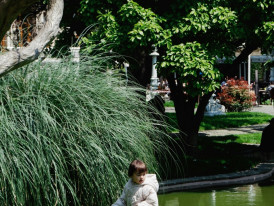
Children playing in Nagai Botanical Gardens Photo by M e r v e on pexels
The Wizarding World vs. Real Local Magic
Universal Studios Japan draws millions of visitors annually, most of them for the Wizarding World of Harry Potter. The butterbeer flows, the castle looms, the rides deliver calculated thrills. It's spectacular and expensive and completely artificial, which doesn't make it less enjoyable if you know what you're getting.
But while tourists queue for roller coasters, local families explore different kinds of entertainment. The Osaka Science Museum offers hands-on exhibits that actually teach something. Nagai Park provides vast green space for picnics, sports, botanical gardens where children can run free without purchasing admission tickets.
Arcade halls throughout the city offer their own kind of immersive experience. UFO catchers, rhythm games, photo booths that transform your face into anime characters. These places pulse with different energy than theme parks, less orchestrated, more spontaneous, cheaper and somehow more honest.
The contrast isn't between good and bad entertainment, but between imported excitement and local discovery. Universal Studios offers expertly crafted experiences designed in boardrooms and tested by focus groups. Neighborhood arcades, park playgrounds, and museum exhibitions grew organically from what people actually wanted to do with their free time.
Both have their place. But if you only have time for one, consider which kind of magic you're actually seeking.
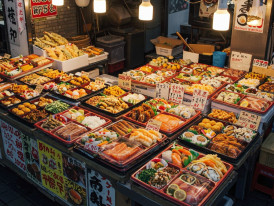
Bento stalls with colorful selections
Osaka Station — City Within a Station
Osaka Station isn't just transportation infrastructure, it's a vertical city that happens to have trains running through it. Department stores rise fifteen floors above the platforms. Restaurant floors offer everything from standing sushi bars to white-tablecloth French cuisine. Underground passages connect to other buildings, other subway lines, other commercial complexes in a network that extends for kilometers.
You could spend entire days here without stepping outside. Many people do, especially during summer heat waves or winter cold snaps. The climate control is perfect, the selection endless, the people-watching extraordinary. Businesspeople rush between meetings, students cluster around charging stations, elderly groups meet for coffee and gossip.
The bento selection alone deserves attention! Dozens of vendors offering elaborate lunch boxes that range from simple to spectacular. Regional specialties, seasonal ingredients, presentation that elevates convenience food to art form. This is fast food culture at its most sophisticated.
The Shinkansen platforms on the upper levels hum with different energy. Quieter, more focused, touched by the glamour that still surrounds bullet train travel. Passengers wait in orderly lines, boarding with efficiency that makes airline travel look chaotic by comparison.
But the local train platforms below buzz with everyday chaos. Commuters checking phones, students eating convenience store meals, families juggling luggage and small children. This is where the station reveals its true function, not as destination, but as the center of a transportation web that connects Osaka to everywhere else.

Alleyway izakaya glowing at night Photo by Satoshi Hirayama on pexels
Getting Around: Bullet Train, Loops, and Winding Alleyways
The Shinkansen pulls into Shin-Osaka with whisper-quiet precision, doors aligning perfectly with platform markings, arrival timed to the minute. It's engineering as performance art - 320 kilometers per hour reduced to gentle deceleration, massive kinetic energy converted to smooth stop.
But Osaka's character lives in slower transportation, the Loop Line that circles the city center, connecting neighborhoods and commercial districts in a circuit that takes an hour to complete. Local trains that stop at every station, giving passengers time to observe the city passing outside windows.
The real discovery happens on foot, in alleyways barely wide enough for two people to pass. These narrow spaces host some of the city's best drinking establishments. Tiny bars with six seats, Izakaya where regulars have claimed the same stools for decades, hidden restaurants that serve one dish perfectly rather than many adequately.
Navigation requires patience. Street addresses follow logic that makes sense to postal workers but confuses everyone else. Buildings hide behind other buildings. The most interesting places rarely advertise themselves with obvious signage.
This is where smartphone GPS both helps and hinders. You can find any destination efficiently, but you miss the discoveries that happen while getting lost. The best Osaka experiences often occur in the spaces between planned destinations, the shrine tucked behind an office building, the noodle stand that operates from a modified truck, the view corridor that suddenly opens between buildings to frame the castle or bay.
Speed gets you between cities. Wandering gets you into them.
Tip
We match you with the right host, not just any guide.Want to experience the real Osaka with someone who lives there?
A fully private experience, planned and led by a local host who tailors the day to you
Day Trip Destinations
Unlike Japan's capital city, Osaka serves as perfect base for exploring western Japan. Kyoto's temples and traditional architecture lie 30 minutes away. Nara's deer park and giant Buddha make easy day trip. Kobe's harbor views and premium beef justify the short journey.
March and April bring optimal weather for these excursions, when cherry blossoms bloom across the region. Each destination offers distinct character while remaining accessible from Osaka's central location.
Nightlife & Local Culture
When sun sets, Osaka transforms. Tiny bars in narrow alleyways serve cold beer to regulars claiming same stools. Hidden restaurants perfect single dishes rather than attempting many adequately.
The town comes alive during Tenjin Matsuri, one of Japan's three great festivals, when the entire city celebrates with portable shrines and fireworks over the river. These moments reveal Osaka's soul; boisterous, welcoming, unashamed of its working-class roots.
New World district buzzes with retro charm, its towering Tsutenkaku tower overlooking maze of kushikatsu stalls and arcade halls. Here, amid Asia's densest urban landscape, traditional Japanese culture adapts and thrives.
Beyond Tourist Attractions
Popular attractions in Osaka draw millions, but locals know the city's rhythm. Early morning temple visits before tour buses arrive. Off-season castle walks when crowds thin. Late-night food adventures when authentic character emerges.
The best places often lack obvious signage, neighborhood public baths where regulars gossip, covered shopping arcades serving locals, small parks where kids play games their parents played decades earlier.
Ready to plan your perfect day in Osaka?
Start your experienceOsaka Japan Tourist Spots: Rethinking What's "Touristy"
Here's what I've learned about Osaka Japan tourist spots after living among them: the label "touristy" tells you more about attitude than authenticity. Places don't become fake just because visitors discover them. They become performative when they start catering exclusively to visitor expectations rather than local needs.
Osaka Castle attracts millions of tourists annually, but local joggers still circle the moat every morning. Dotonbori blazes with neon designed to photograph well, but the Takoyaki vendors still perfect their technique for customers who'll be back tomorrow. Shitennō-ji hosts tour groups daily, but neighborhood residents still come to pray, especially during festival seasons.
The difference between tourist trap and genuine attraction often comes down to timing and approach. Visit popular spots during off-peak hours. Look for signs of local use alongside visitor infrastructure. Ask yourself whether a place would survive if tourism disappeared tomorrow.
Some of Osaka's best Osaka experiences happen in spaces that never intended to become attractions. Covered shopping arcades where neighbors still shop for groceries, public baths where regulars discuss neighborhood gossip, small parks where children play the same games their parents played decades earlier.
The city rewards curiosity over checklist completion. Every highlight contains multitudes — historical layers, contemporary uses, future possibilities. The castle park serves joggers and cherry blossom viewers and history buffs and wedding photographers. The aquarium educates children and amazes adults and provides date venues and supports marine conservation research.
Living Highlights, Not Museum Pieces
What makes Osaka's highlights worth your time isn't their fame or photogenic qualities or historical significance, though all of those matter. It's their integration into ongoing life, their refusal to become frozen displays of themselves.
These places work because they continue working. The temple adapts to host flea markets. The castle park accommodates joggers alongside sightseers. The train station evolves into vertical city. The street food stalls perfect their craft for locals and visitors alike.
Osaka doesn't preserve its culture behind glass. It lives it daily, changes it gradually, shares it generously with anyone curious enough to look beyond the obvious. The real highlights aren't separate from ordinary life — they're where ordinary life becomes extraordinary, where functional spaces reveal unexpected beauty, where tourist destinations remain, fundamentally, places where people actually live.
That's the highlight worth seeking: not Osaka as performance, but Osaka as home to nine million people who've figured out how to make urban life work, taste good, and feel human at impossible scale. Everything else is just scenery.
What if your day in Osaka was planned by someone who knows it — and you?
City Unscripted matches you with a local host who creates a private experience based on your interests, not a set route.
Want to experience the real Osaka with someone who lives there?
A fully private experience, planned and led by a local host who tailors the day to you
